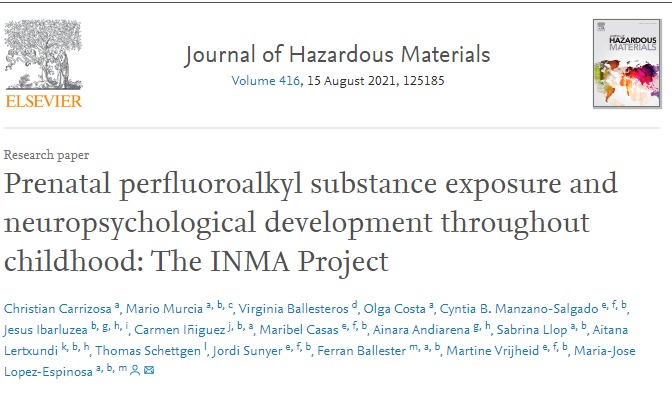
Background
Perfluoroalkyl substances (PFASs) have been related to neurodevelopmental toxicity in animals. However, human studies are inconclusive.
Objectives
To evaluate the association between prenatal PFAS exposure and neuropsychological development during childhood.
Methods
1240 mother–child pairs from the Spanish INMA Project were analyzed. Perfluorohexanesulfonic acid (PFHxS), perfluorooctanoic acid (PFOA), perfluorooctane sulfonate (PFOS), and perfluorononanoic acid (PFNA) were measured in first-trimester maternal plasma. Neuropsychological development was assessed at 14 months, 4–5 and 7 years covering four domains: general cognitive, general motor, attention, and working memory. Associations were studied by means of multivariable regression analyses.
Results
PFHxS, PFOA, PFOS, and PFNA medians were: 0.6, 2.4, 6.1, and 0.7 ng/mL. Higher PFAS prenatal exposure was associated with worse motor development at 14 months, especially in the case of PFHxS (β[95%CI]: −1.49[−2.73, −0.24]) and to a lesser extent PFOS (−1.25[−2.62, 0.12]). There was also a marginal positive association between general cognitive development at 4–5 years and PFOS (1.17[−0.10, 2.43]) and PFNA (0.99[−0.13, 2.12]). No clear associations for other neuropsychological outcomes or any sex differences were found.
Discussion
This study shows no clear-cut evidence of an association between prenatal PFAS exposure and adverse neuropsychological development in children up to the age of 7 years.


